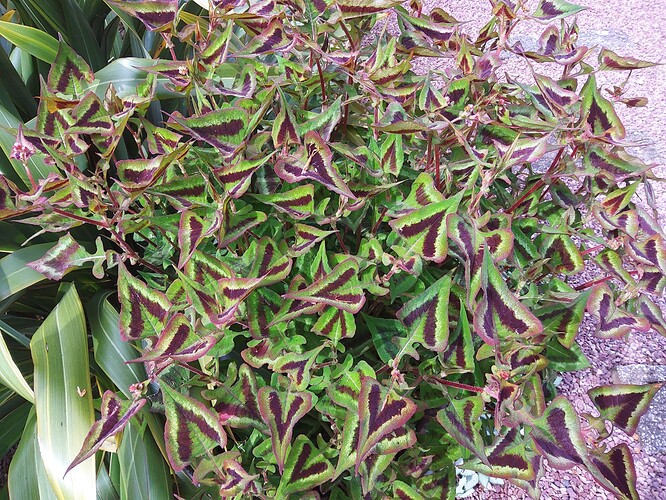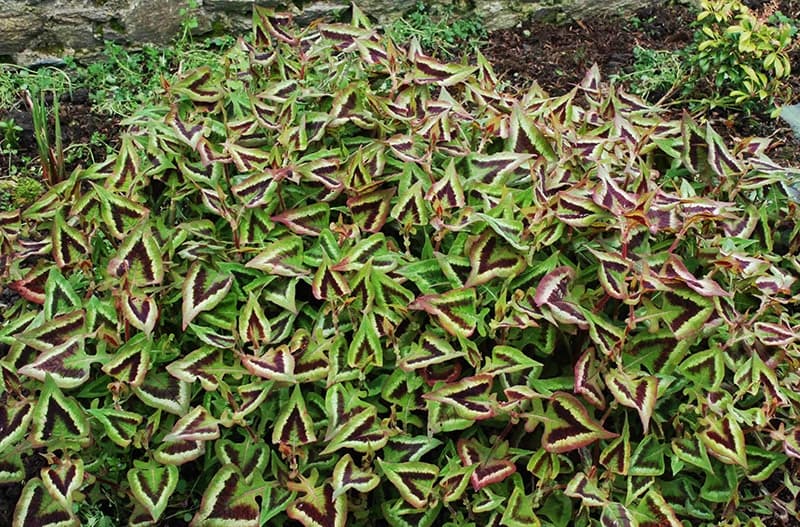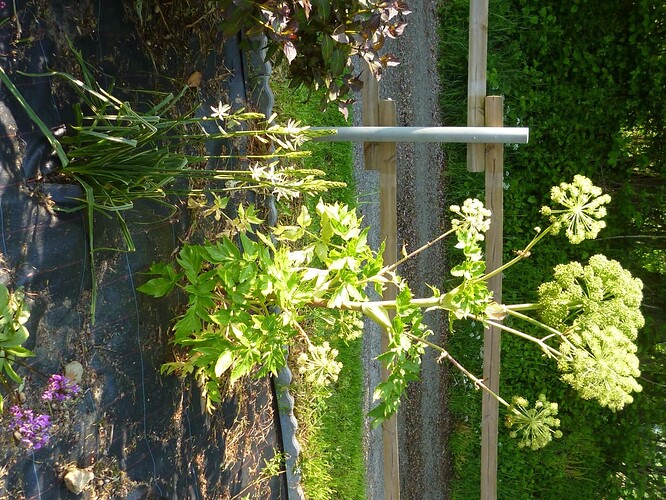That does look very promising @Debby_Wade @Nigel-at-BUF-House - I’ve never come across it. Looks like it grows rather large…
This one from Promesse de Fleurs will not exceed 1.50m in height and will occupy 2.50m in width.
Thank you Nigel - I am looking for shrubs for the newly reclaimed area of the garden (and also to have somewhere else to put my cyclamen infestation  )
)
Such a shame you live so far away…I can’t stop OH taking cuttings of things, so we have pots and pots of shrubs with nowhere to put them.
Well we are planning on actually getting away for a break at some point - probably September once the main rush is over - and we don’t know your area at all… 
I’ve got quite a few of these growing in my (new) garden, in pots and in the ground but can’t seem to find what it is. Any ideas all of you green fingered lovely people?
It’s this (found on Google images)
Renouée fer-de-lance – Polygonum runcinatum
Just found another nursery which calls it
Persicaria runcinata ‘Purple Fantasy’
And apparently it’s popular name is “knotweed purple fantasy” - with knotweed in its name I don’t think I’d like it in my garden!
Thanks @SuePJ just looked it up, fortunately its not like the Japanese variety🙂
I’ve a feeling it has herbal/medicinal uses… (?)
If it’s growing in pots (and not just seeded therein) it sounds like a deliberate choice by the previous Owners…
just thinking…
We have several different varieties of these polygonum/persicaria for their beautifully marked leaves, as flowers are nothing special . Some are more thuggish than others, but none to the Putin-like extent of knotweed. And easy to remove.
My partner’s Mum was a respected plantswoman and she had it in her garden as it makes a lovely contrast with other plants and brings colour in. However, for myself, I wouldn’t want huge areas of it, which is what I suspect you might have @mark ?
Its not too bad, a couple of pots and a clump (or 2) by the pond. Early days for us in our new garden. We seem to have rather a lot of Acers, I counted 8 red and 4 green leaved ones yesterday ![]()
If possible, I used to leave a new garden without too much disturbance for a year, just to see what came up…
but if something is rampaging too wildly, gentle control seems reasonable.
You are lucky! Beautiful things requiring no maintenance ![]() Just the job…
Just the job…
I meant to post this a couple of days ago. The big plant was a cutting given to me by a lovely elderly lady a few years ago pre covid. She had opened her garden for a couple of weekends in the summer and generously gave me quite a fw cuttings, most of which died on me (my fault) but this one didn’t. When it started to get going I thought it was some sort of angelica variant but now I haven’t any idea. I’m sure one of you will know exactly what it is! ![]()
Apologies for it being sideways, The file I uploaded was portrait so if anyone knows how I can rectify this please do tell me!
Its a baby triffid ![]()
Norwegian angelica, wild celery.
I thought it might be some sort of angelica but the thing that puzzles me about the link you’ve quoted is firstly that it is described as a biennial and it has now been growing for several years and the other is that is was at its peak flowering at the end of April and is now going over… ![]()
But not very drought tolerant, especially when young. We have a red acer that must be nearly 15 years old, and it still looks like it a puny shrub. Every year in the spring, it looks beautiful for about a month, and then the heat comes, and it shrivels into a wistful husk of its former self. Somehow, I don’t think the previous owners put it in the right place, as it is exposed to the blasting cold winds most of the time in winter, and then in full sun during the summer.
Biennials do not always follow a strict two-year life cycle it’s very country and climate/variety dependent.



